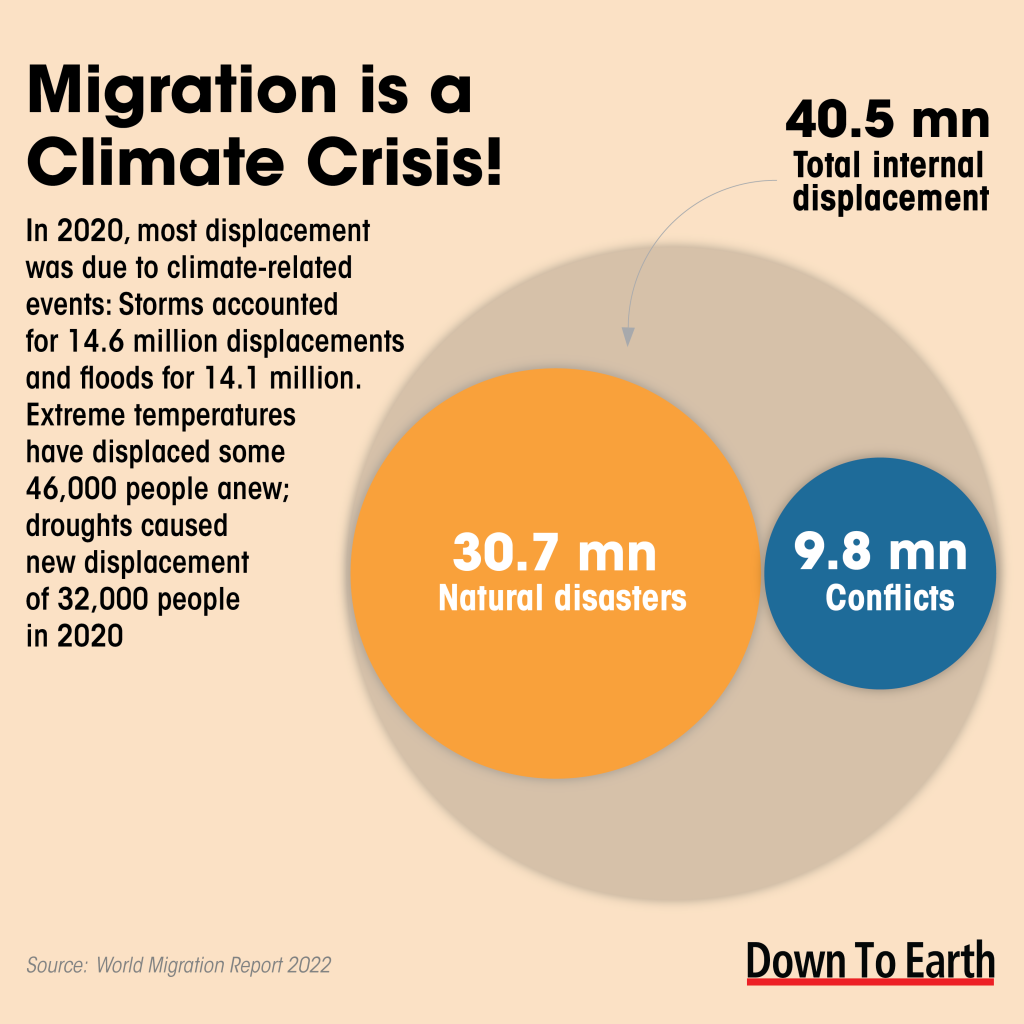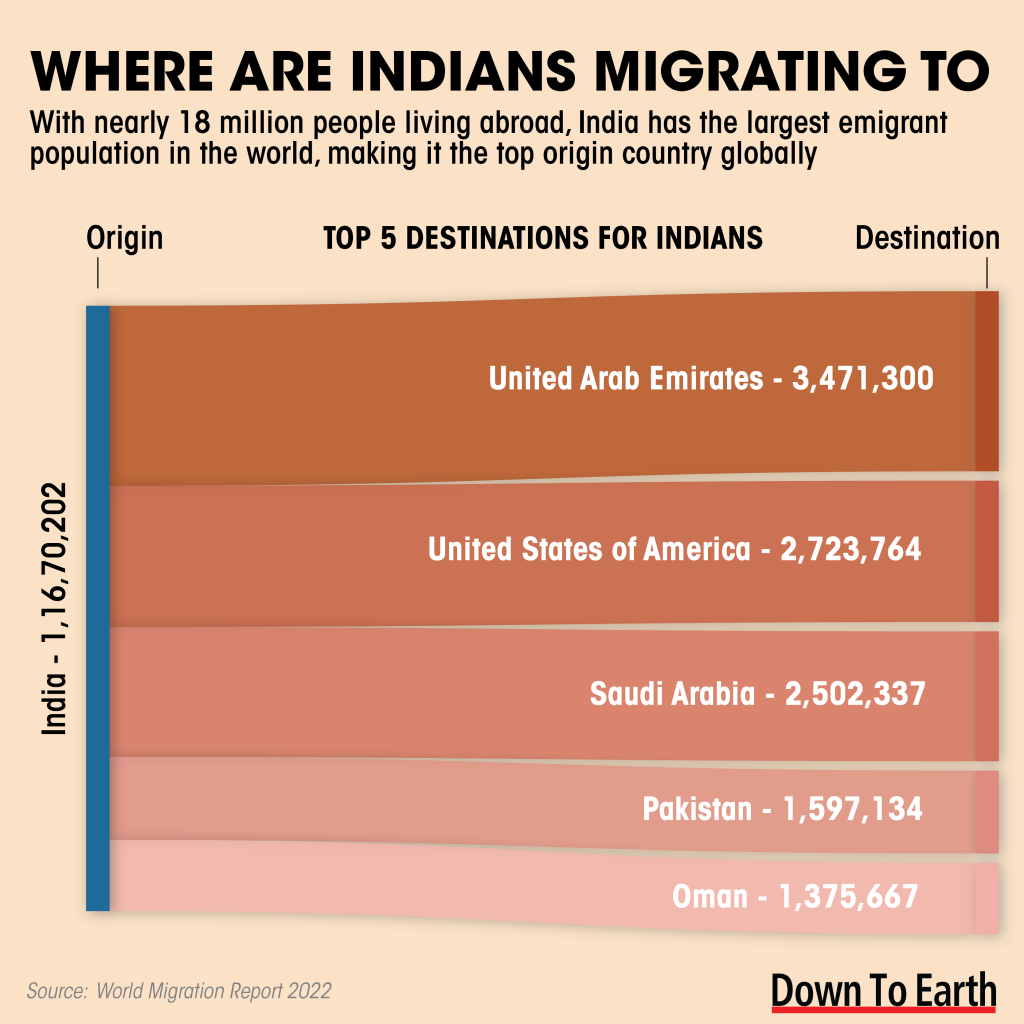The World Migration Report 2022, prepared every second year, was published by the UN International Organization for Migration (IOM).
Earlier, the World Bank estimated that 143 million would migrate within their countries by 2050 due to climate change related events in sub-Saharan Africa, South Asia and Latin America.


Reference
The World Malaria Report 2021 was released by the World Health Organization (WHO).
Reference
Reference
Reference
The Food and Agricultural Organization (FAO) has said that the average food prices (after adjusting for inflation) in the 11 months of 2021 are the highest in 46 years due to climate change.
Reference